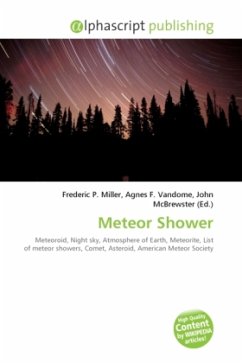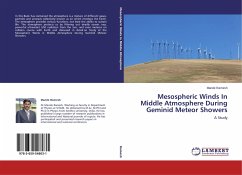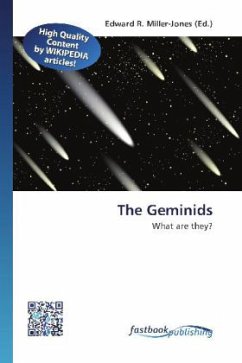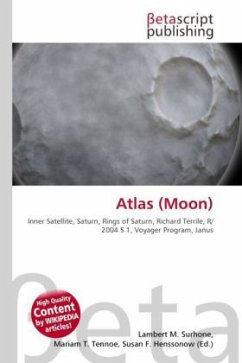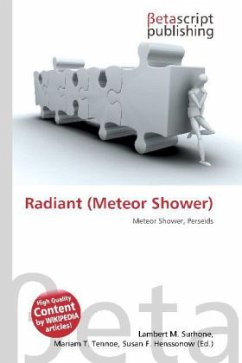
Radiant (Meteor Shower)
Versandkostenfrei!
Versandfertig in 6-10 Tagen
23,99 €
inkl. MwSt.

PAYBACK Punkte
12 °P sammeln!
Please note that the content of this book primarily consists of articles available from Wikipedia or other free sources online. The radiant or apparent radiant of a meteor shower is the point in the sky, from which (to a planetary observer) meteors appear to originate. The Perseids, for example, are meteors which appear to come from a point within the constellation of Perseus. An observer might see such a meteor anywhere in the sky but the direction of motion, when traced back, will point to the radiant. A meteor that does not point back to the known radiant for a given shower is known as a sp...
Please note that the content of this book primarily consists of articles available from Wikipedia or other free sources online. The radiant or apparent radiant of a meteor shower is the point in the sky, from which (to a planetary observer) meteors appear to originate. The Perseids, for example, are meteors which appear to come from a point within the constellation of Perseus. An observer might see such a meteor anywhere in the sky but the direction of motion, when traced back, will point to the radiant. A meteor that does not point back to the known radiant for a given shower is known as a sporadic and is not considered part of that shower. Meteor showers are caused by the trails of dust and debris left in the wake of a comet. This dust continues to move along the comet''s wake, and when the Earth moves through such debris, a meteor shower results. Because all of the debris is moving in roughly the same direction, the meteors which strike the atmosphere all "point" back to the direction of the comet''s path.



